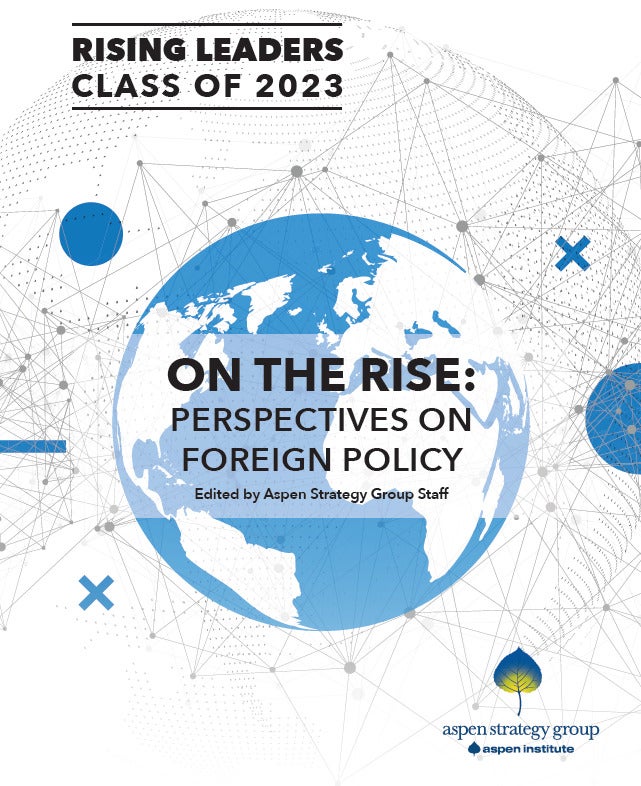In anticipation of the 2018 Aspen Security Forum, we will be publishing a series of explainers on topics that will be discussed at this year’s event. Visit the Forum’s website for agenda updates and more.
Early in May, European Union High Representative Federica Mogherini made a speech at the European University Institute on the state of the EU. In the aftermath of US withdrawal from the Iran deal, Mogherini’s speech was largely concerned with the consideration that, in what might be considered a time of chaos, the European Union has the opportunity to take on a greater leadership role in the global order. The ability to do so would rest on the strength of the Union and, in Mogherini’s words, the Union was “as strong as Europeans want it to be.”
Such words offered both a characterization and a challenge, reflecting how central America has long been to European security and how, as a result, Europeans have long had the choice whether to pursue greater defense solidarity. For the last few years, however, the answer by European military leaders and NATO Allies to that choice has been the affirmative. Long before President Trump’s speech at NATO HQ, European defense leaders have been responding to a radically changed security environment marked by a new set of unconventional threats, declining American engagement in European security, and the inadequacies of slow, bureaucratic, and underfunded military apparatus. Faced with such a shift, both NATO and the EU have undertaken great efforts to raise their defensive capabilities, redefine their security priorities, and pursue more aggressive military engagement. Unfortunately, it is yet to be seen whether leaders will be able to transform European security in this new era or whether these activities will be sabotaged by the same challenges of trust and commitment that have previously hamstrung the defense arrangements.
In the early part of the 21st Century, with the end of the Cold War, NATO struggled to define its role in an unconventional security environment, with austerity-restricted military budgets and domestic disinterest in intervention. Traditionally responsible for territorial defense of Europe, NATO did not appear well-suited to pressing contemporary security crises like global terrorism, Middle East insurgencies, or territorial disputes in Asia-Pacific. 2014 was a major inflection point for NATO’s priorities, marking both the return of conflicts in its core competency and a commitment to adapt to the new set of emerging threats. Russia began to covertly deploy troops to the Crimea, supposedly in support of separatist pro-Russian fighters. In response, at the 2014 Wales Summit, NATO Allies committed to combat Russian aggression in the East and to reverse the trend of declining defense budgets by committing Allies to spend a minimum 2 percent of GDP on defense. Since 2016, NATO has been maintaining a forward deployed defense in the Baltic and Central European region to guarantee conventional deterrence against any possible Russian attacks. At the 2016 Warsaw Summit, in the aftermath of a series of terrorist attacks in Europe during 2015, NATO committed to projecting stability beyond its borders, engaging in counter-terrorism and capacity-building efforts in its “Southern Neighborhood.” Increasingly targeted by cyberattacks and recognizing the critical role it will continue to play in conventional and unconventional warfare, Allies significantly expanded NATO’s competencies by signing the Cyber Defence Pledge (a commitment to develop a full range of cyber defense capabilities for NATO) and recognizing cyberspace as a new operational domain of warfare. These spending commitments and expanded areas of operation have renewed NATO’s role as the center of European collective defense and staked out new roles for NATO in the unconventional security environment. However, ambition alone cannot resolve the issues of coordination and computability which have long plagued the organization and are arguably more critical for NATO’s new areas of operation. Intelligence-sharing, at the heart of both counter-terrorism and cybersecurity, has long been a major challenge for the alliance.
Starting in 2012, with the Obama Administration’s declared reprioritization of military power to Asia, the EU has been working to define a European security apparatus without the strong cooperation of the US. In 2016, the European Commission issued a new strategic vision for EU security policy, the EU Global Strategy, to drive more effective implementation of its agenda of common defense and security priorities. Among other efforts, the Strategy aimed to align and enhance defense planning, capability development and operational cooperation by establishing the Coordinated Annual Review on Defence (a process for monitoring and coordinating member state national defense planning) and the Military Planning and Conduct Capability (a permanent operational HQ for non-executive missions). A new European Defence Fund is structure to fund defense capability creation with financial incentives for joint development and interoperability. Arguably the most significant unified operationalization of European defense policy has been the 2017 activation of the Permanent Structured Cooperation (PESCO). A defense alliance first set out in the 2007 Lisbon treaty, PESCO provides a framework for member states to jointly develop and invest in military capabilities and improve troop readiness and interoperability. Unlike previous efforts to cooperate on defensive readiness, PESCO sets standards for member accountability, requiring regular defense budget increases, national defense investments, defense planning transparency, and deployable armed forces. The continued and uncertain test of these initiatives will remain whether EU countries, despite common threats and financial incentives, continue to operate in their individual national interests. The history of EU defense union has always been one of different threat assessments, risk appetites, and defense cultures. The greatest test of the EU’s new security initiatives will be if their preparatory alignment, interoperability development, and accountability standards will be enough to overcome this fragmentation.
Despite President Trump’s harsh language about allies paying “their fair share,” US investment in European deterrence has increased six-fold during his administration. Despite Brexit, British and European negotiators assure a continued, strong security cooperation between the UK and EU. Despite all the sensational headlines and fears that Europe is being forced to go it alone on security, the reality is that European security cooperation and operations have largely remained the same. Yet many European leaders are seizing on the hyperbole of these claims to justify and push for the aforementioned initiatives to enhance European autonomy on security and defense. It may be they believe fears of Europe alone can help push European society to finally decide how strong they want to be.
Philip Chertoff is a Young Leader in Foreign and Security Policy at the Geneva Centre for Security Policy.


